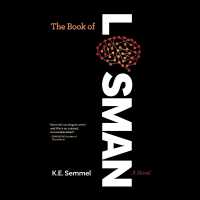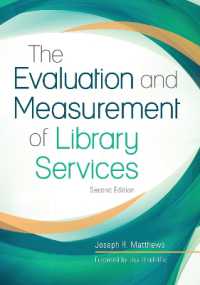Full Description
This collection of essays first highlights the popularity of interdisciplinary undergraduate studies and their recent gains in the world of higher education, and then addresses the paradoxical failure of these studies to achieve a permanent position in the curricula of individual universities and colleges. This question and its attendant issues are explored in three ways: (1) an overview of how these changes are affected by the political economy, (2) case studies from actual universities and colleges, and (3) a discussion of the sustainability of undergraduate interdisciplinary studies programs.
Contents
Table of Contents
Acknowledgments
Preface—Tanya Augsburg and Stuart Henry
Introduction—Tanya Augsburg and Stuart Henry
PART I. The History of Interdisciplinary Programs
1. The Political Life Cycle of a Cluster College: The Western College Program at Miami University—William H. Newell
2. The Devolution of the Individualized Degree at the University Without Walls/University of Massachusetts-Amherst—Rick F. Hendra
3. To Educate the People: The Department of Interdisciplinary Studies at Wayne State University—Andre Furtado, Linda Lora Hulbert, Julie Thompson Klein, Lisa Maruca, Caroline Maun, Daphne W. Ntiri and Roslyn Abt Schindler
4. Phoenix: From Ashes to Reincarnation at Appalachian State University—Jay Wentworth and Richard M. Carp
5. From Cutting Edge to Cutting Board: The Inter-Arts Center at San Francisco State University—James W. Davis
6. Interdisciplinary Studies at San Francisco State University: A Personal Perspective—Raymond C. Miller
PART II. New Directions
7. Interdisciplinarity and Teacher Preparation at San Francisco State University—Helen Goldsmith
8. Transforming an Experimental Innovation into a Sustainable Academic Program at the University of Texas-Arlington—Allen F. Repko
9. Interdisciplinarity Within Emory University's Academic Community—Peter W. Wakefield
10. Turning Points: New Century College at George Mason University—Janette Kenner Muir
11. Barriers and Solutions to Launching an Interdisciplinary Movement: The University of Massachusetts-Lowell—Diana C. Archibald
12. A Canadian and Collaborative Perspective: The Office of Interdisciplinary Studies at the University of Alberta—Rick Szostak
Conclusion—Tanya Augsburg, Stuart Henry, William H. Newell and Rick Szostak
Chapter 3 Appendices
Chapter 11 Appendix
About the Contributors
Index








